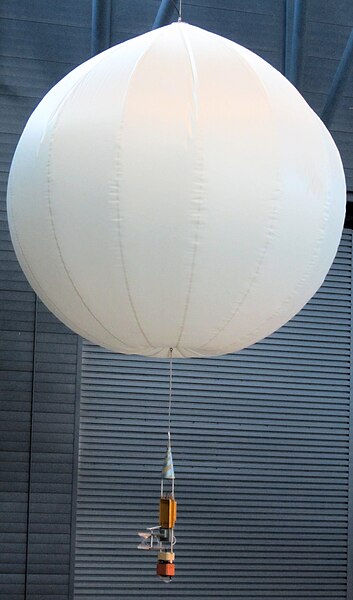Vega 2 was a Soviet space probe part of the Vega program to explore Halley's comet and Venus. The spacecraft was a development of the earlier Venera craft. The name VeGa (ВеГа) combines the first two letters Russian words for Venus and Halley They were designed by Babakin Space Centre and constructed as 5VK by Lavochkin at Khimki. The craft was powered by large twin solar panels. Instruments included an antenna dish, cameras, spectrometer, infrared sounder, magnetometers (MISCHA) and plasma probes. The 4,840 kilograms (10,670 lb) craft was launched on top of a Proton 8K82K rocket from Baikonur Cosmodrome, Tyuratam, Kazakh SSR. Both Vega 1 and 2 were three-axis stabilized spacecraft. The spacecraft were equipped with a dual bumper shield for dust protection from Halley's Comet.
Vega Solar System probe bus and landing apparatus (model)
Vega balloon probe on display at the Udvar-Hazy Center of the Smithsonian Institution.
Vega 1 was a Soviet space probe, part of the Vega program. The spacecraft was a development of the earlier Venera craft. They were designed by Babakin Space Centre and constructed as 5VK by Lavochkin at Khimki. The name VeGa (ВеГа) combines the first two letters from the Russian words for Venus and Halley.
Vega Solar System probe bus and landing apparatus (model)
Spacecraft Vega 1
Vega balloon probe on display at the Udvar-Hazy Center of the Smithsonian Institution



